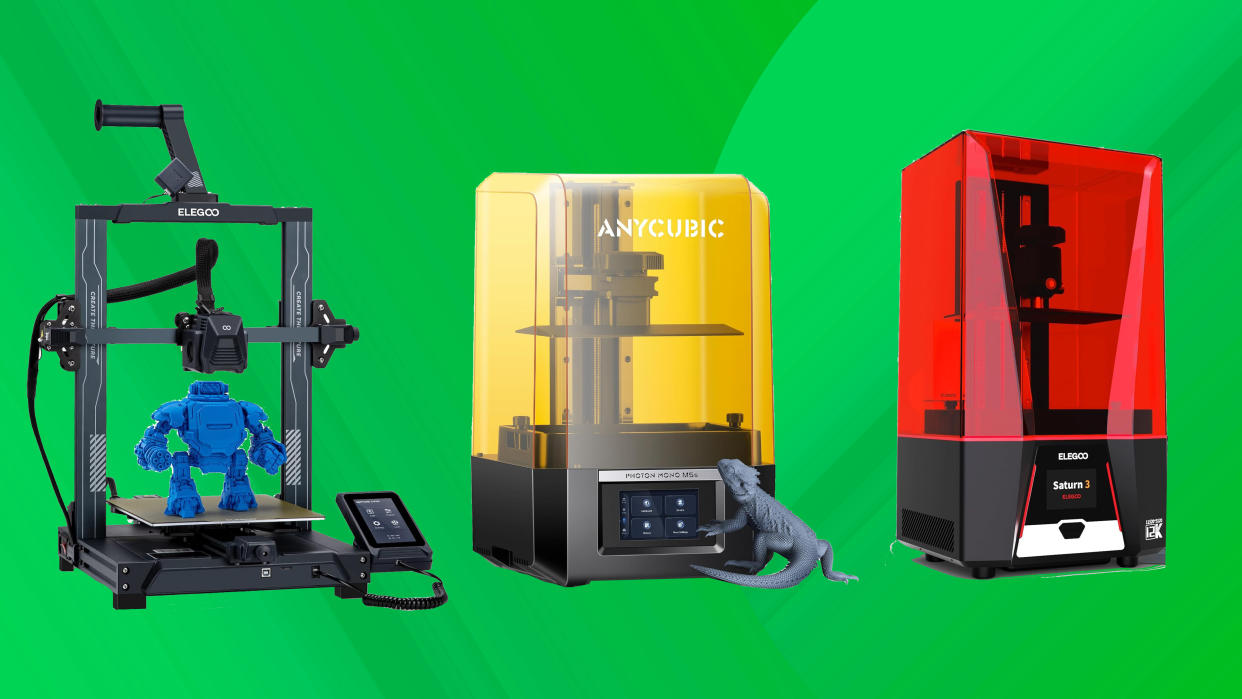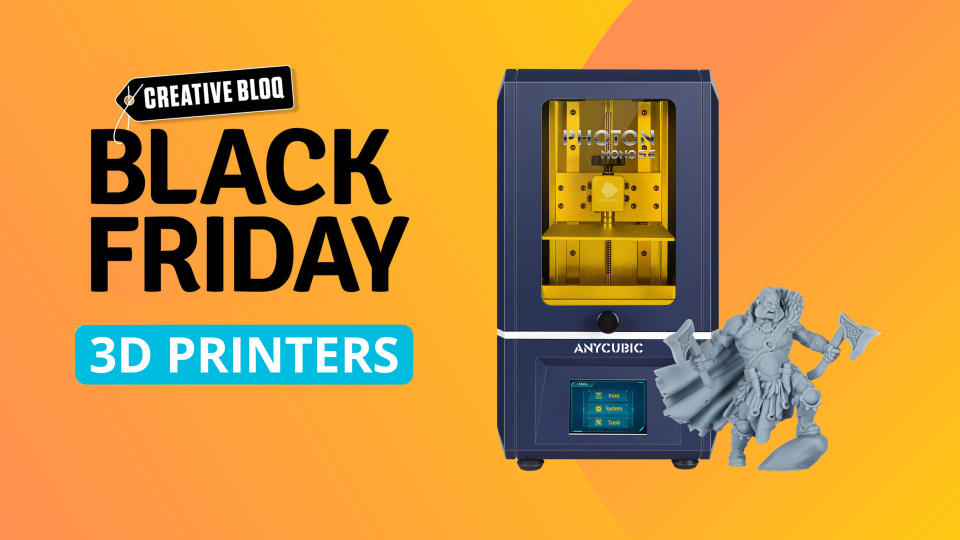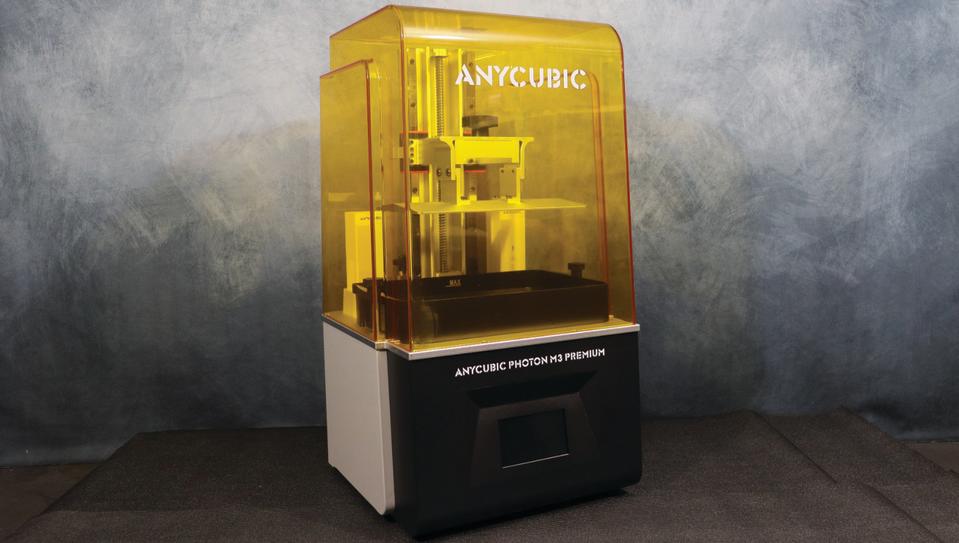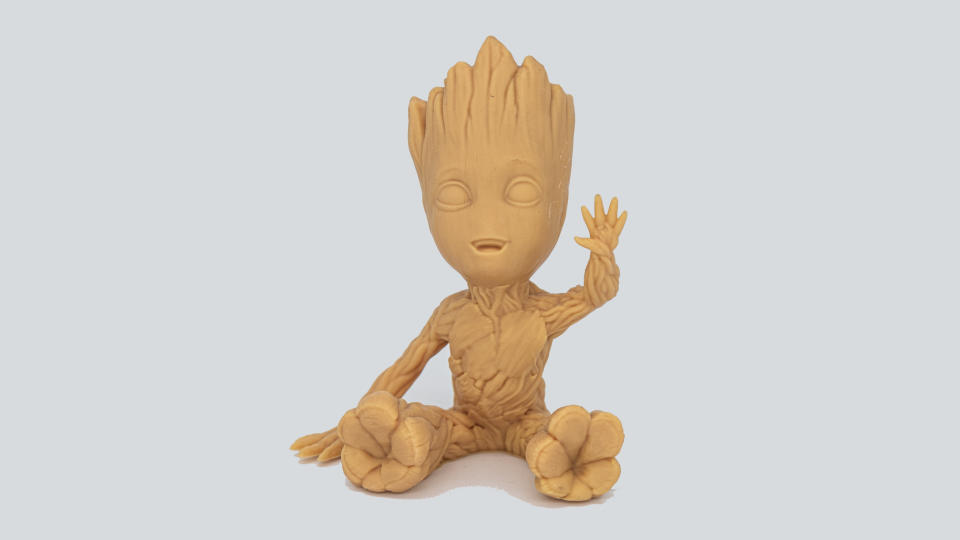How much does a 3D printer cost and how much should you pay this Black Friday?

There are now more options than ever when choosing a 3D printer, but if you're new to this popular printing revolution then it can be tricky to bag one of the best 3D printers at a reasonable price. That's where we come in. We can provide our expert advice to help you make an informed choice.
If you want to get a great deal, then there's no better time than Black Friday to shop for a 3D printer. With the anticipated sales event just around the corner, we've been keeping tabs on the top Black Friday 3D printer deals that are already live right now. We're seeing some decent deals already, with $100 or so knocked off many models – and we reckon that'll keep falling during Black Friday proper, if previous years are a guide. That means you can expect any price indications we give in this piece to drop even further during the sales event. During Prime Day we saw discounts of 30 per cent and higher, so we expect to see the same during this sales event.
In this guide, we'll be focusing on 3D printer prices to advise how much you should realistically be spending on a device that meets your needs, whether you're a complete beginner, looking to upgrade your current 3D printer, or a master modeller looking for a pro-level machine. You can also see our pick of the best 3D printers here.
Beginner 3D printer prices
Expect to pay? Around $200-$300
Want to begin your 3D printing journey but don't have the biggest budget? No problem. You can get a great quality and user-friendly 3D printer (and plenty of material too) for less than $200, but keep in mind that, often, the advanced features that make using a 3D printer for the first time easier come at a higher price.
For example, a desirable feature for making 3D printing easier involves auto bed levelling systems to keep your surface balanced, which is an important but very irritating part of the manual printing process. Others might prefer a larger build volume for making bigger models, and machines with faster printing speeds.
3D printers that use filament (as opposed to resin materials) are a better choice for those new to home printing as they can be much easier and flexible to work with – taking the form of reels full of plastic filament which the printer will then feed into and disperse through a hot nozzle. FDM printers offer more material choices and can be far safer for households with children or pets.

So, beginner 3D printers with helpful features aren't always the cheapest as they require the machine to work harder to take the pressure off of the user to set things up themselves. The good news is that you can find 3D printers with auto-levelling capabilities for less than $250, such as the Creality Ender 3 V3 SE.
Another printer we'd recommend for beginners is the Elegoo Neptune 3 Pro (currently has 10 per cent off at $269), which boasts a very easy-to-assemble setup process which will allow anyone to have this machine up and running in less than an hour, a 36-point auto bed levelling system, a built-in task light, and easy print removal features (which is a tricky thing for beginners to grasp).
If you can stretch to $300, then there's also the Bambu Lab A1 Mini FDM printer (without the Automatic Material System, which is $459) that offers excellent and speedy printing power in a compact form.
Intermediate
Expect to pay? $400-$1,000
If you've used a 3D printer before and feel confident that you know what you're doing, but still don't fancy the complicated and super expensive machines, then this section is for you. At this level, you can expect to be spending anywhere between $400-$1,000 on a 3D printer depending on what you want to get out of it.
There are many creatives who at this point switch from a filament-based FDM (Fused Deposition Modeling) printer to an MSLA (Masked Stereolithography) resin material printer instead, given that resin 3D printers can produce more detail, and are desirable to people who print board game pieces (for example).
Some MSLA printers use UV-cured resin materials to form a model at a slower pace, with individual layers created one by one. These require caution in handling and post-processing the print, which is made from using toxic chemicals. If using resin materials in your 3D prints, you'll need to wear a filtering mask when setting up a print and you must wash and cure your prints after the completed process.
So which one should you buy? If you're intrigued by toxic chemical printing, then the Anycubic Photon Mono M5s might be right up your alley. It can create ultra-high-resolution 12K prints with impressive accuracy and doesn't require any manual calibration. Just add resin and you're ready to go. This model has a retail price of $539, but is bundled here at Amazon with 1KG of resin for just $515.99.
Pro-level
Expect to pay? $2,000-$6,000
Today’s 3D printers are all about speed, and that's what going to cost you the most if you're looking for a printer that can churn out a masterpiece in record time. Usually, this is handy for business owners, like those who have successful Etsy stores and need to create batch prints on a regular basis.
If you're someone who wants to print larger parts in a single printing session, you’ll need a printer that comes equipped with a larger build volume (approximately 250mm inches cubed and above), which won't be cheap – costing anywhere from $2,00-$6,000.
You can also get 3D printers that double as laser engravers for speciality creative work, such as the SnapMaker Artisan 3-in-1 – around $3,000. If you have a looser budget, you should definitely consider investing in an FDM printer with a direct drive system which pushes the filament out of the nozzle more directly and sometimes at a faster pace for more accurate printing.

Filament and material costs
Filament
It's not just the cost of a 3D printer itself that you'll need to worry about, as material costs are a big factor, and the more you use, the more you'll spend.
If you're going to be buying an FDM printer, you'll want to use filaments that can be melted at the same temperature that your 3D printer allows for, as some substances require higher temperatures that not every printer can achieve.
The most common type of material used in FDM printers is PLA filament, which can be used to print on pretty much anything. PLA filament rolls can cost around $20 per kg on average, though you can find special colour and design filaments like the silk-style PLA for approximately $30 per kg.
Although there are more durable plastics such as PETG or flexible TPU that can also be used, but these will need machines with extruders that can hit up to 220 to 230 degrees Celsius to melt correctly. ABS and Nylon materials, on the other hand, will require an even hotter 240 or 250-degree heat to function.

Resin MSLA
Resin is another material used for 3D printing, but it's not for everyone. As we mentioned above, it should be used with extreme caution even though most resin printers have contained chambers to prevent any toxic chemicals from escaping. The complexity of resin printing results in much more detailed prints, in exchange for a slightly more complicated process to produce them.
Resin printers have fewer material choices, but most of the chemicals you need for your printer can be purchased in bundles from the same manufacturer and brand that created your printer, so you shouldn't need to worry about sourcing obscure materials to make your prints.
Anycubic has also started releasing its own high-speed resin (sold separately) which is said to increase accuracy and printing times when used with Anycubic machines. This resin is sold in large bottles and can be had for a price of $50 for 1kg.
Overall, the price of resin will depend entirely on which exact material you need, and how much the brand of printer sells these bottles for. (It might even be a good idea to look into the cost of material before deciding which resin printer manufacturer you want to buy from).

